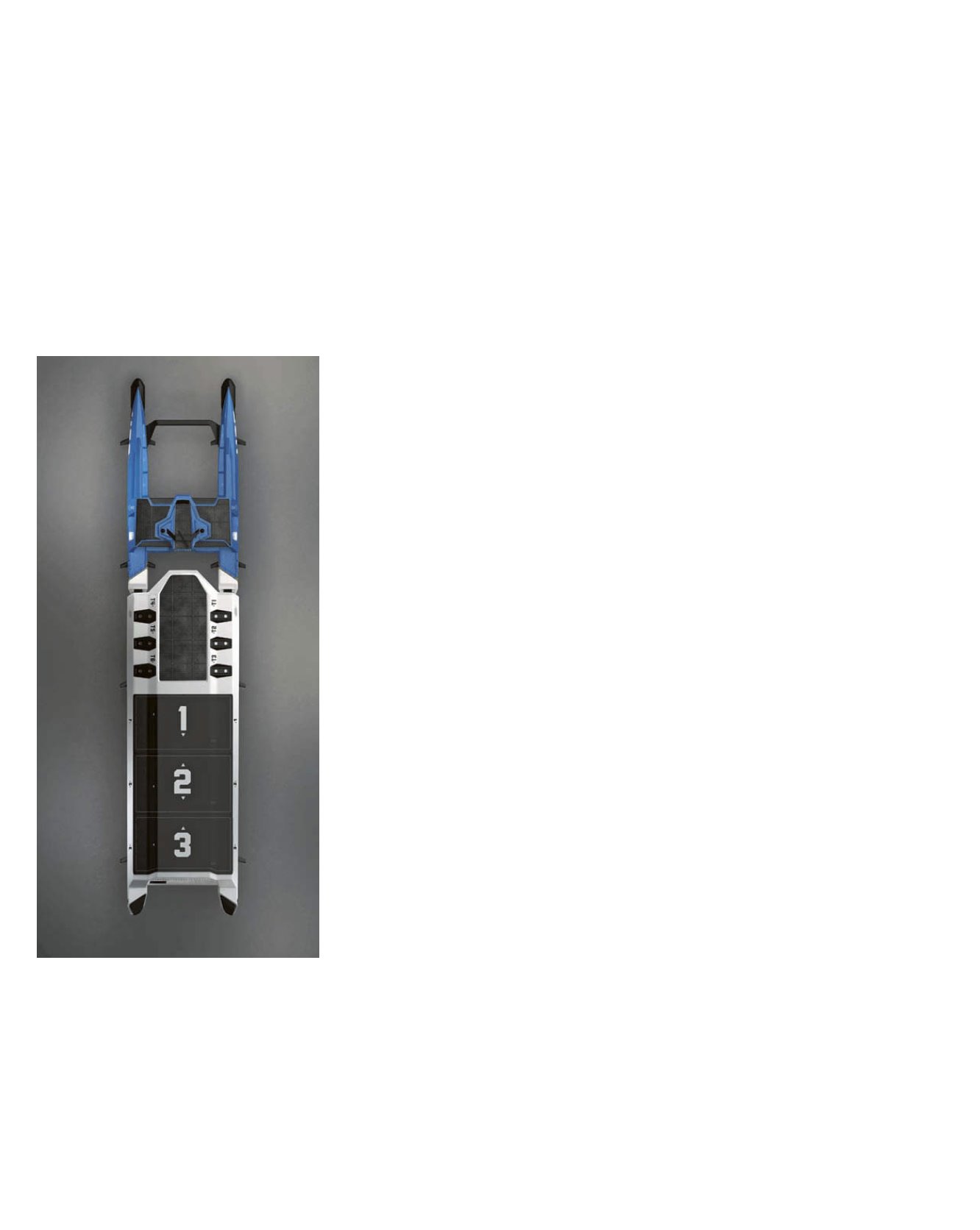
AHO WORKS STUDIES 2012-2013
Diploma Projects
Master of Industrial Design
THE FUTURE OF OFFSHORE SUPPLY
MARTIN SKOGHOLT HANSEN AND MIKAEL JOHANSEN
Supervisor: Sigbjørn Windingstad
The goal of this project was to explore the future of platform supply vessels
and to challenge the traditional way the maritime industry designs and uses
offshore vessels. The result is a concept for a new platform supply vessel where
we did explore design opportunities to increase efficiency, safety and flexibility
of cargo handling.
The MPS (Multi Purpose SWATH) concept is designed to be a modular
platform that can adapt to a great variety of operations. The vessel itself is a
minimized structure containing only what is needed to get the job done. The
reduced accommodation area makes it a more efficient solution compared to
today’s offshore vessel designs where a lot of dead weight is transferred around
at any given time.
Offshore operations often require precision work in high seas. In the fu-
ture, we will experience even greater changes and more extreme weather. The
SWATH-hull type (Small-Water plane-Area-Twin-Hull) used on this vessel
makes it very stable in high seas and ensures comfort for the crew, and reliability
even in the most demanding operations.
As this concept consists of a standard vessel platform, production would be-
come much more standardized than it is today. New standardized production
lines and increased use of advanced industrial robots can make in-sourcing to
Norway possible.
By introducing a modular platform, entry barriers for new and smaller com-
panies could be significantly lower. Investments can be made gradually, up-
grades and capacities can be increased or decreased or functions can change
altogether. Modularity creates new possibilities to build and make changes to
the customer’s fleet to provide operational flexibility and meet new demands.
As the speed of technology accelerates, a modular vessel will let the industry
follow the changes and adapt new technologies for emerging markets faster. This
can for example lead to reduced emissions by implementing new fuel technol-
ogies. It can also handle increasingly complex logistics by implementing new
standards for cargo handling. This lengthens the vessels lifespan because re-use
and switching of owners for different types of markets would become much easier.


